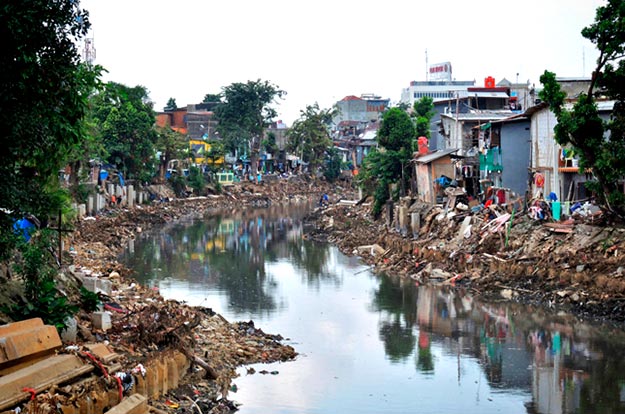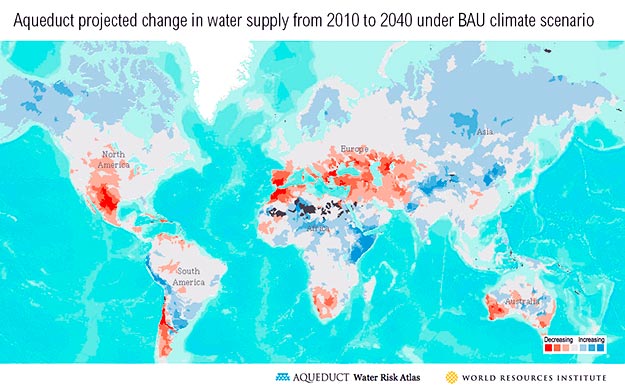The International Energy Agency’s World Energy Outlook 2016 found that energy production currently accounts for 10 percent of the world’s total water withdrawals – most of which is used in power plant operations. If current trends continue, hydro and thermal power’s thirst for water will increase even more. This would result in even higher water withdrawals and water consumption (due to water that is withdrawn and lost to evaporation during the thermal power process).
The more the energy sector depends on water, the more it exposes itself to vulnerabilities. At the same time, climate change is bringing warmer temperatures, increased variability, and increased water scarcity in mid-latitude zones —all which negatively impact the electric power industry. The more the climate warms, the more the power sector will suffer: Experts predict that power production in European thermal plants could drop by 19 percent between 2031 and 2060 due to shut-downs impacted by climate change.
In places projected to face both higher temperature and lower precipitation—such as South America and parts of southern Africa—energy generation will feel the pain of climate change to an even further degree. There is a troubling overlap between water-stressed areas and those that need energy the most: In sub-Saharan Africa, which includes dry areas like drought-stricken Kenya, seven out of ten people lack access to electricity. If thirsty forms of energy are used in these areas, shutdowns due to water shortages may ensue.
It’s important that power plants in vulnerable regions act early by developing climate adaptation strategies and investing in technologies that can save water (such as dry cooling and wastewater recycling) to reduce potential water-related risks. Beyond power plants and dams, renewable energy technologies such as solar photovoltaic cells and wind energy are less dependent on water. In China, WRI is using our Baseline Water Stress: China tool to map intersections of water stress and thermal power generation across the country. In addition, we’re measuring the competition for water between the power sector and other sectors – such as agricultural and domestic users. With more information about where and when power plants compete for water with other thirsty sectors, policy makers can make informed decisions about the tradeoffs of switching to less water-intensive options for energy production in the future.
Source: https://www.wri.org/
Dear User/Visitor! Please, answer on our questions: tick off one of the positions – your answer will make us able to improve our site and make it more interesting and useful!



